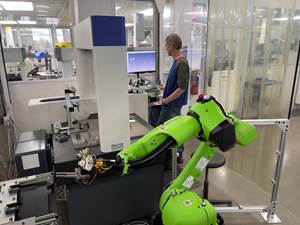At Last . . . A Smart Way To Move Surplus Inventory
Readers of this column know I’m a tax guy. That’s all I do or have done for many years.
Readers of this column know I’m a tax guy. That’s all I do or have done for many years. But in my early years—in the 50s and 60s—like all CPAs, my professional life revolved around auditing.
One big item on the balance sheet that “bugged” me then was the surplus inventory problem. The problem still plagues almost all businesses today. Only the numbers are bigger—much bigger.
The inventory method you use is no help. Whether you use LIFO (Last-In, First Out), FIFO (First-In, First-Out) or WIG (Wild Indifferent Guess), if you have ten items or a million that can be sold only below cost, you are a member of the profit-stealing-surplus-inventory club. Even the large tax deduction makes you an unhappy member.
Over the years, the surplus disposal problem was tolerated by most industries and considered just a cost of doing business. Technology to the rescue. Internet-based services are replacing the outdated and inefficient manual processes of surplus disposal. Companies quickly are understanding the reduced cost, competitive advantages and larger revenues associated with transitioning to an automated, online version of surplus disposition.
Now there is a new problem—which of the many dot com companies do you select? Most surplus trading sites use auctions to help sellers liquidate surplus inventories. But I discovered an Internet company that utilizes a negotiation-based system to help buyers and sellers reach agreement.
The CPA in me caused me to sharpen the old pencil and analyze the possibilities. It’s a new game, but here is how it looks out of the starting gate. The seller has two advantages in a negotiation. First, the seller maintains more control of the sales process in a negotiation. He or she doesn’t have to wait for all the bids to come in and the auction time frame to expire. Second, the seller can look at the bids separately and negotiate the best offer or combination of offers to accept. In an auction, the buyers bid amongst themselves without any contact with the seller.
Let’s take a look at a case study that illustrates the likely financial results of using three different methods: auction, fixed price and negotiation.
The Case: Joe, owner of Success Co., has 10,000 widgets that he can write off at a cost of $3 each. Joe has a pool of buyers. One buyer will pay $5 each for all 10,000 widgets; one buyer offers $6 each for 5,000 and one buyer wants only 2,500 widgets at $7 each.
Scenario 1—Auction: Joe is unsure of where to set the price for his widgets. He lists the 10,000 widgets at $3 each, which is just enough to cover actual costs. Joe hopes that buyers will bid up the price. A buyer puts in an opening bid at $3. What if other buyers in the market are interested but they don’t bid because they are only interested in smaller lots? If no one else bids, Joe must sell the entire lot of widgets for a total of $30,000. Not bad!
Scenario 2—Fixed Price Sale: Again, Joe is unsure of the price. He lists the widgets for $4 each, enough to cover cost plus some profit. A buyer pays the $4 each, and Joe takes home $40,000. Better!
Scenario 3—Negotiation: Joe, still unsure of the price, asks the dot com guys (bless technology) to negotiate with buyers. Based on the offers, the system automatically finds the best deal: Sell 5,000 at $6; sell 2,500 at $7, and send an e-mail to the third buyer offering the remaining 2,500 at $5.
Joe banks $60,000 for Success Co.
Because selling surplus inventory on the Internet is so new, I would like your feedback. Visit http://www.surpluschannel.com/ to see how an inventory surplus Web site can help you.
Related Content
Beyond the Machines: How Quality Control Software Is Automating Measurement & Inspection
A high-precision shop producing medical and aerospace parts was about to lose its quality management system. When it found a replacement, it also found a partner that helped the shop bring a new level of automation to its inspection process.
Read MoreView From My Shop Video 1: A Deep Dive Into Automation with Advance CNC
Advance CNC leverages multiple forms of automation to increase its milling machines' productivity. Learn more in this episode of The View From My Shop.
Read MoreWhich Approach to Automation Fits Your CNC Machine Tool?
Choosing the right automation to pair with a CNC machine tool cell means weighing various factors, as this fabrication business has learned well.
Read MoreInside the Premium Machine Shop Making Fasteners
AMPG can’t help but take risks — its management doesn’t know how to run machines. But these risks have enabled it to become a runaway success in its market.
Read MoreRead Next
3 Mistakes That Cause CNC Programs to Fail
Despite enhancements to manufacturing technology, there are still issues today that can cause programs to fail. These failures can cause lost time, scrapped parts, damaged machines and even injured operators.
Read MoreThe Cut Scene: The Finer Details of Large-Format Machining
Small details and features can have an outsized impact on large parts, such as Barbco’s collapsible utility drill head.
Read More







.png;maxWidth=300;quality=90)














